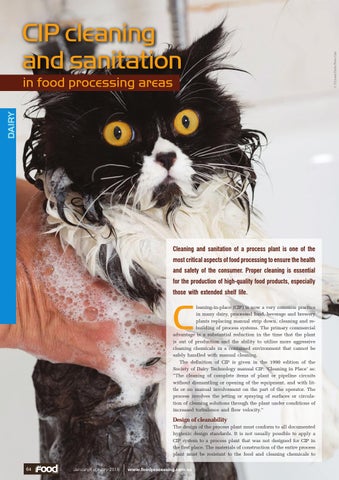DAIRY
in food processing areas
Cleaning and sanitation of a process plant is one of the most critical aspects of food processing to ensure the health and safety of the consumer. Proper cleaning is essential for the production of high-quality food products, especially those with extended shelf life.
C
leaning-in-place (CIP) is now a very common practice in many dairy, processed food, beverage and brewery plants replacing manual strip down, cleaning and rebuilding of process systems. The primary commercial advantage is a substantial reduction in the time that the plant is out of production and the ability to utilise more aggressive cleaning chemicals in a contained environment that cannot be safely handled with manual cleaning. The definition of CIP is given in the 1990 edition of the Society of Dairy Technology manual CIP: ‘Cleaning in Place’ as: “The cleaning of complete items of plant or pipeline circuits without dismantling or opening of the equipment, and with little or no manual involvement on the part of the operator. The process involves the jetting or spraying of surfaces or circulation of cleaning solutions through the plant under conditions of increased turbulence and flow velocity.”
Design of cleanability The design of the process plant must conform to all documented hygienic design standards. It is not usually possible to apply a CIP system to a process plant that was not designed for CIP in the first place. The materials of construction of the entire process plant must be resistant to the food and cleaning chemicals to 64
January/February 2016
www.foodprocessing.com.au
© 135 pixels/Dollar Photo Club
CIP cleaning and sanitation
